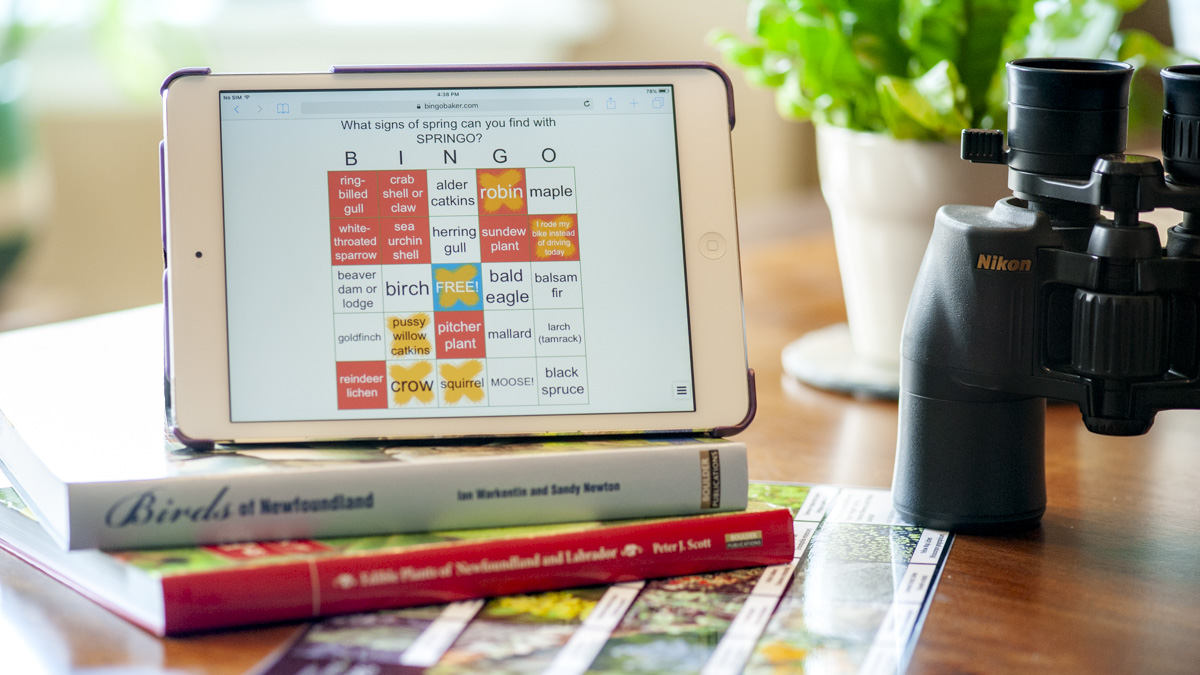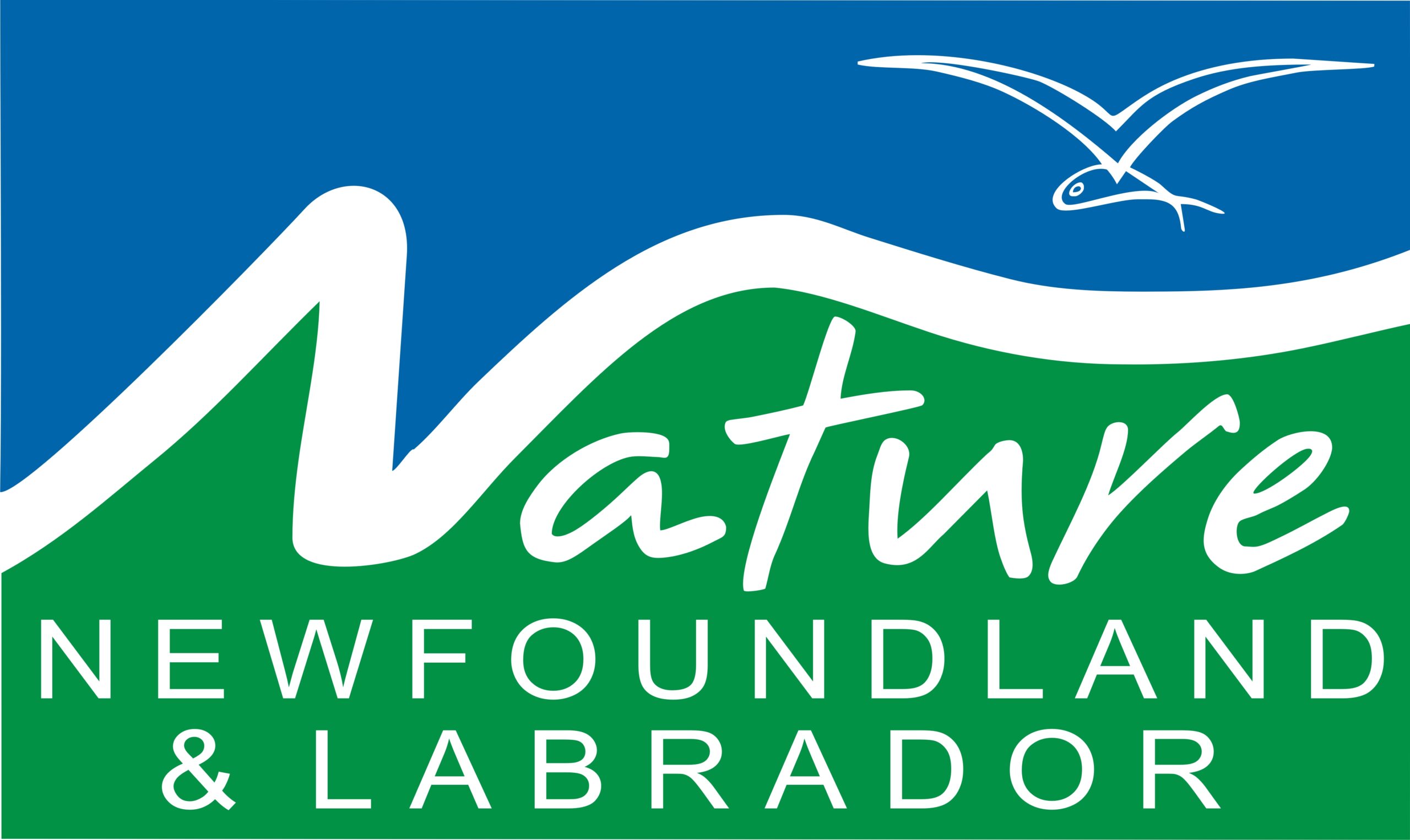
Nature NL is excited to share our new scavenger hunt-style nature bingo game, SPRINGO!
Welcome spring in our province by heading outside in your neighborhood, or hitting up your local trails (practicing good social distancing, of course) and search for some of our favourite natural features now that the snow is melting away.
In addition to being a fun way to get outside, SPRINGO! also helps remind us that many of our province’s flora and fauna are vulnerable to the effects of climate change, both directly and indirectly, through temperature increase or shifting habitats. Keep an eye out for those red “vulnerable” squares that indicate you’ve found an animal or plant species that may be facing challenges adapting to climate change, or one that depends on other species which may become scarce or otherwise difficult to access.
Playing is simple! Submit your winning cards before June 14th, 2021 to be entered into our prize draw.
Show us you’re a NL nature observer: Get bingo (5 in a row in any direction, including diagonal) by going out to your favourite trail and take note of what you see to win! Enter your winning card in the draw for a chance to win a $50 gift card to your local nature-oriented business of choice.

What’s on our SPRINGO! cards — what are we looking for this spring?
BIRDS — Birding is one of our province’s major attractions, and one of our favourite hobbies. Remember, you don’t need specialized equipment to spot birds—you can find them along your neighborhood trails, and even in your own backyard! Migratory bird populations are particularly vulnerable to climate change, as their survival depends the availability of the right food and habitat. What happens if spring comes earlier each year? Will the same foods (insects, fish, seeds, etc.) and nesting resources be available when the birds fly in? What effects might shrinking habitats have on bird populations? Can they support the same numbers of birds? Think about how climate change might affect some of our migratory bird populations, highlighted in red squares.
MARINE ANIMALS — Rising ocean temperature may have a big impact on our fish and other marine species. Warmer water can hold more carbon dioxide, which increases ocean acidity and makes it harder for crustaceans (crabs, lobsters, urchins) and microorganisms such as phytoplankton (algae) to build their hard protective shells. Did you know that microscopic marine algae produce upwards of 50% of the oxygen in Earth’s atmosphere each year? They are also the critical base of a very complex marine food web that our fisheries rely on. Eliminating just one species in the marine ecosystem can impact the survival of many linked species. Phytoplankton are almost invisible, but they are DEFINITELY something we need to protect. Think about our tiniest ocean heroes while you’re checking off our red marine species: a sea urchin test (shell), a crab shell, or those adorable periwinkles at low tide!
BIODIVERSITY — Habitats with high biodiversity are naturally more resilient to disturbances than depleted ones. Wetlands are one of our most ecologically unique and important habitats: plants, birds and animals live in them, and their wet soil stores carbon that might otherwise be contributing to atmospheric greenhouse gas concentrations! You’ll find a few of our unique wetland species in red squares (pitcher plant, sundew plant, sphagnum) to help remind you that preserving biodiversity is important for climate change resilience.
FOODS — You thought we were going to say Bakeapples, didn’t you? While we do love that delicious berry, we’re thinking more about food sources for animals. You’ve probably heard that reduced ice coverage is making it harder for polar bears to hunt, but did you know that caribou might also be facing climate-related challenges? Reindeer lichen is an important food source for caribou in the winter. This includes the grey reindeer lichen, Cladonia rangifera and the star-tipped reindeer lichen, Cladonia stellaris, which you might recognize from the craft store (it’s dried and dyed green to make miniature trees). A projected 1-2 degree increase in winter air temperatures across North America leads to rainfall replacing snowfall, and may generate thick ice layers on top of snow. The caribou cannot dig through thick ice to access lichens when other food is scarce in spring and winter. Identify any of our province’s reindeer lichen species and you’ve got yourself a red square checked off!
CLIMATE CHANGE ACTIONS — Ok, these aren’t natural features, but you can help fight climate change by making choices to reduce our reliance on fossil fuels. So tick a red transportation box (“I rode the bus instead of driving today”, or “I used my bicycle instead of driving today”) if you can!
Ready to play? Click below to generate your first card!
You can play SPRINGO! on your laptop or mobile device, or print your card and take it outside with you! Remember to bookmark your individual game card so you can revisit it to keep playing.
Not familiar with the items on our cards? That’s OK! This is a great opportunity to learn how to identify them—check out our blog post on the best nature guides for Newfoundland and Labrador!
Take a screenshot or a photo of your winning game and submit it below to be entered in our draw. Visit submission link for full contest details and eligibility.
